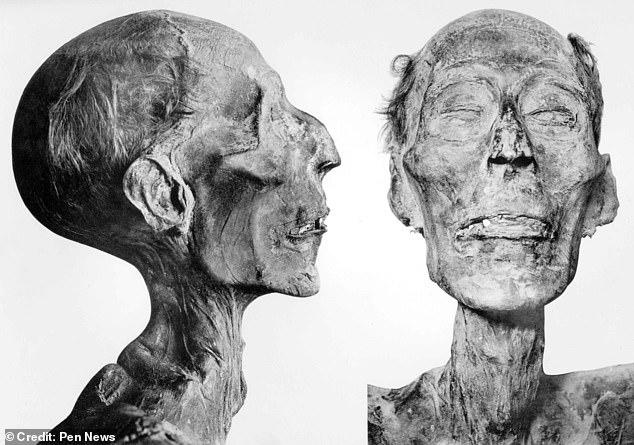FALCON POWERS – A team of scientists has revealed the facial features of the most powerful pharaoh of ancient Egypt, Ramses II, for the first time since he passed away 3,000 years ago.
They claimed that the signs on his face reveal the distinctive features of his appearance just moments before his death, according to the British Daily Mail newspaper.
Ramses II, who ruled in the 13th century BC, is famous for his military victories and revolutionary construction projects such as the Abu Simbel temple. Reconstructing the ancient skull
The newspaper noted that he became visible to the modern world as scientists used his embalmed ancient skull to reconstruct his face at the time of his death, when he was about 90 years old.

Scientists say Ramses II’s dental health was “poor and his teeth were significantly worn down”, and he also appears to have suffered from poor bone health due to the presence of an “abscess” that would have caused him a lot of pain.
The study revealed that his muscles had become very weak in old age, and strangely pointed to the fact that he had very prominent veins on his forehead.
Brazilian graphic expert Cicero Moraes, who was behind the new archaeological discovery, described Ramses’ face as “wise.” But reconstructions like this are known to be somewhat unreliable due to the fragility of the mummy’s skin and its thousands of years of age.

Comparisons with previous statues
Therefore, scientists must draw inspiration from other areas to reshape the face, as Moraes explained: “In the current study, we conducted a very extensive analysis, where we compared the reconstructed face with statues of Ramses II.” He continued: “The goal was to understand the reliability of the statues, as many people assume that the match will be good,” he added, “but we saw that this is not the case – the statues indicate a good match with the shape of the nose, and even in some cases, with the shape of the face.”
He went on: “But in general, the forehead is more sensitive, and the lips and chin are more pronounced in the statues, making them not reliable enough.”


